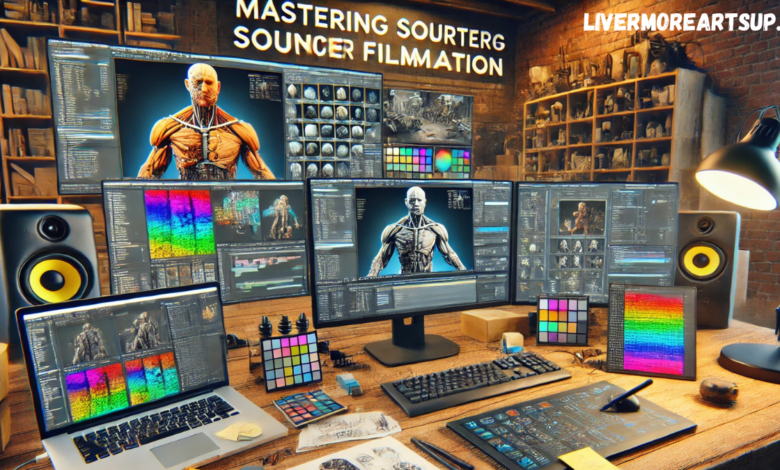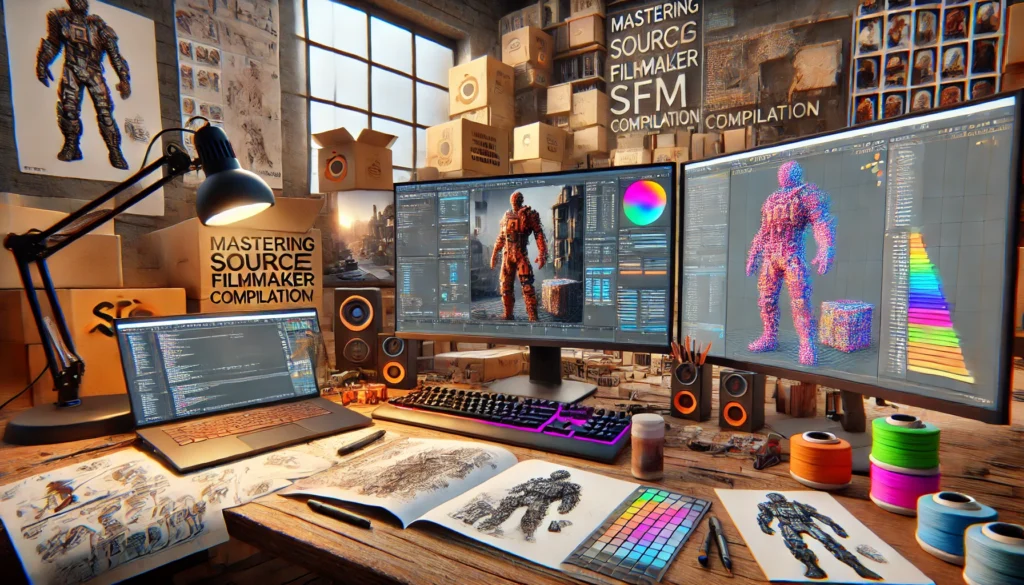Mastering SFM Compile A Comprehensive Guide

Introduction
Source Filmmaker (SFM Compile) is not just a tool for creating animated films using Valve’s game assets it is a robust platform that allows artists and developers to bring their own visions to life through custom animations and models. However, to leverage SFM Compile effectively, one must understand the intricacies of the SFM Compile compilation process. This guide aims to demystify the steps involved in compiling custom models and animations, equipping you with the knowledge to enhance your creative projects. By understanding the tools, files, and procedures required, you can unlock a new realm of possibilities in animation and game development.
Understanding SFM Compile
SFM Compile refers to the process of converting 3D models and their associated textures and animations into a format that SFM Compile can utilize in its environment. This involves several file formats and tools, each serving a unique purpose in the workflow. The heart of this process is the model file (MDL), which integrates meshes, skeletons, and textures, allowing for detailed animations and interactions within SFM’s filmmaking toolkit.
Preparing Your Workspace
Before diving into the compilation process, it’s essential to set up a proper workspace with all necessary software installed. This includes not only SFM Compile but also additional 3D modeling tools like Blender or Maya, and texture editors such as Photoshop or GIMP. Having the right tools at your disposal streamlines the creation process and ensures compatibility with SFM Compile engine.
Types of Files and Formats in SFM Compile
Understanding file types such as MDL, VTF (Valve Texture Format), and VMT (Valve Material Type) is crucial. These formats are designed to work seamlessly with the Source engine, allowing for high levels of customization and control. An MDL file, for example, is the final output of the SFM compile process and is what SFM Compile uses to render models in a scene.
Modeling for SFM
Creating models suitable for SFM starts with designing your characters or props in a compatible 3D modeling software. It’s important to consider the polygon count and bone structure, as these can affect the performance and flexibility of your model in SFM. Once your model is ready, it must be exported in a format that SFM can import, typically through a specific exporter plugin for your 3D software.
Texturing and Materials
Texturing involves wrapping your 3D models in 2D images that give them color and details. In SFM, textures are applied using VTF files, while material properties such as shininess or transparency are defined in VMT files. Creating well-optimized VMT files can significantly enhance the visual quality of your models in SFM.
Rigging and Animation
Rigging is the process of adding bones to a model and defining how they move. This step is essential for animation, as it allows you to pose and animate your models within SFM. Proper rigging ensures that your animations will look smooth and natural when played back in SFM.
Compiling the Model

The final step is to compile your model into an MDL file using a command-line tool provided with SFM. This process can be tricky, and issues like missing textures or animation glitches are common. Learning how to troubleshoot these issues is crucial for a successful SFM compile.
Advanced Techniques and Tips
To ensure that your SFM projects run smoothly, it’s important to optimize your models. This can involve reducing the polygon count of your models or creating lower-resolution textures, which can significantly improve performance without a noticeable loss in visual quality.
Utilizing Custom Scripts and Plugins
The SFM community has developed a variety of scripts and plugins that can automate parts of the compilation process or enhance the capabilities of SFM. Familiarizing yourself with these tools can save you time and open up new possibilities in your filmmaking.
Collaborating and Sharing Models
Sharing your creations with the SFM community can not only give you exposure but also feedback that can improve your skills. However, it’s important to respect copyright and intellectual property rights when sharing and using models created by others.
Conclusion
Compiling models for SFM is a skill that combines technical knowledge with creative problem-solving. As you become more familiar with the tools and processes described in this guide, you will find that the world of SFM offers endless possibilities for animation and storytelling. Keep experimenting, learning from the community, and pushing the boundaries of what you can create with SFM.
FAQs
What are the most common errors during SFM compilation and how can they be fixed?
Common errors include texture mismatches, animation rig issues, or export errors, which typically require revisiting your source files for corrections.
How do I convert non-SFM models into SFM-compatible formats?
This involves importing your model into a 3D software that SFM supports, ensuring it meets SFM’s requirements, and then exporting it using the appropriate plugins.
Can I use models compiled for SFM in other applications?
While SFM models are optimized for the Source engine, they can often be converted back into general formats like OBJ or FBX for use in other applications.
What are the best community resources for SFM learners?
Websites like SFMLab, Steam Community forums, and specific Discord servers are invaluable for new and experienced users alike.
How often does SFM receive updates and how do they affect compiling processes?
Updates to SFM can introduce new features or optimization changes that might require adjustments to your compilation process or scripts. Keeping up with the official SFM website and community forums will help you stay updated.
You May Also Read: https://livermoreartsup.com/guardian-bikes/




